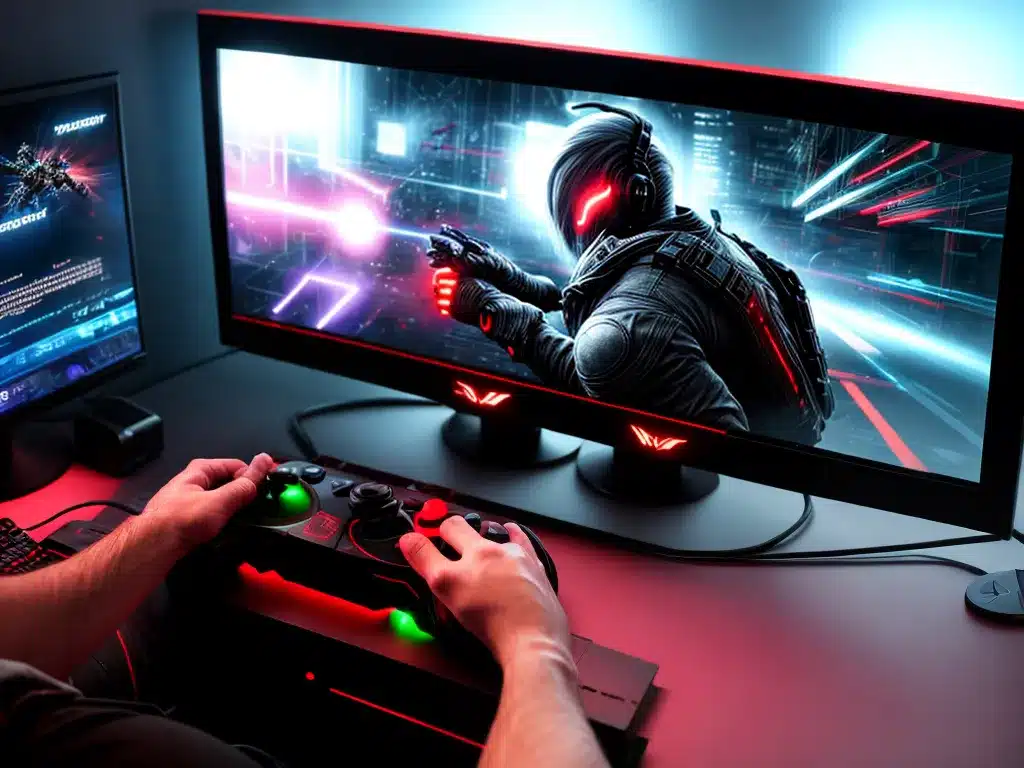
Getting the most out of your gaming PC requires optimizing both hardware and software. Here are 6 tips to boost performance and get the best experience:
1. Update Your Graphics Drivers
Keeping your graphics drivers up-to-date is essential for gaming performance. Graphics drivers control how your GPU communicates with games and Windows. Newer drivers improve compatibility, fix bugs, and improve frame rates in games.
I recommend using the GeForce Experience or AMD Adrenalin software to automatically check for and install the latest drivers. Drivers should be updated whenever new versions release – at least every 1-2 months.
2. Tweak In-Game Graphics Settings
Games have a wide array of graphics settings that impact performance and visuals. I always start by lowering unnecessary settings like anti-aliasing, ambient occlusion, and post-processing effects.
The most impactful settings are usually resolution, texture quality, draw distance, and shadow quality. I tweak these four settings to balance visual fidelity and frame rate. Lower resolutions like 1080p improve performance over 1440p or 4K.
Using tools like MSI Afterburner, I monitor the GPU and CPU usage. If the GPU is maxed out at 95-100%, lowering graphics settings will improve performance. If the CPU is the bottleneck, graphics tweaks won’t help as much.
3. Close Unnecessary Background Apps
Leaving game launchers, web browsers, video playback apps, and other software running in the background takes up RAM and CPU cycles. This leads to worse gaming performance.
Use Task Manager to view background processes and end any unnecessary ones before launching a game. Good options to close include:
- Web browsers
- Discord, Skype, Spotify
- Game launchers like Steam, Origin, Battle.net
- Video / screen capture software
4. Overclock Your GPU
Overclocking increases your graphics card’s clock speed to boost fps in games. It can provide a nice free performance boost of 5-15% depending on the game.
Use software like MSI Afterburner to overclock your GPU core and memory clock speeds. Increase core and memory clocks in increments of 50 MHz until they become unstable. Benchmark games and do stability testing to find the maximum stable overclock.
Higher-end cards have more headroom for overclocking. Just watch temperatures and voltages – higher overclocks require more power and heat.
5. Upgrade Hardware Components
Upgrading components like the GPU, CPU, RAM, and storage provides the most significant performance gains. But it also costs money.
Focus on your performance bottleneck:
- GPU – Upgrade to a better graphics card
- CPU – Upgrade to a CPU with more cores and higher clocks
- RAM – Add more RAM capacity and speed
- Storage – Switch to an SSD or NVMe drive
Also make sure the CPU and GPU are not being throttled by temperatures. Improving case airflow helps.
6. Reinstall Windows
After years of installing and uninstalling apps, the Windows registry and file system get bogged down with unnecessary clutter. This slows down gaming performance over time.
Back up your data and perform a clean install of Windows to start fresh. Wipe your OS drive and reinstall Windows from scratch. Then only install the essential apps and games you need. This strips away years of accumulated junk.
Reinstalling Windows once per year helps optimize file system performance and latency for faster game loading.
By following these tips – updating drivers, optimizing settings, closing apps, overclocking, upgrading hardware, and reinstalling Windows – you can unlock better gaming performance on your PC. Just be sure to benchmark results along the way!












